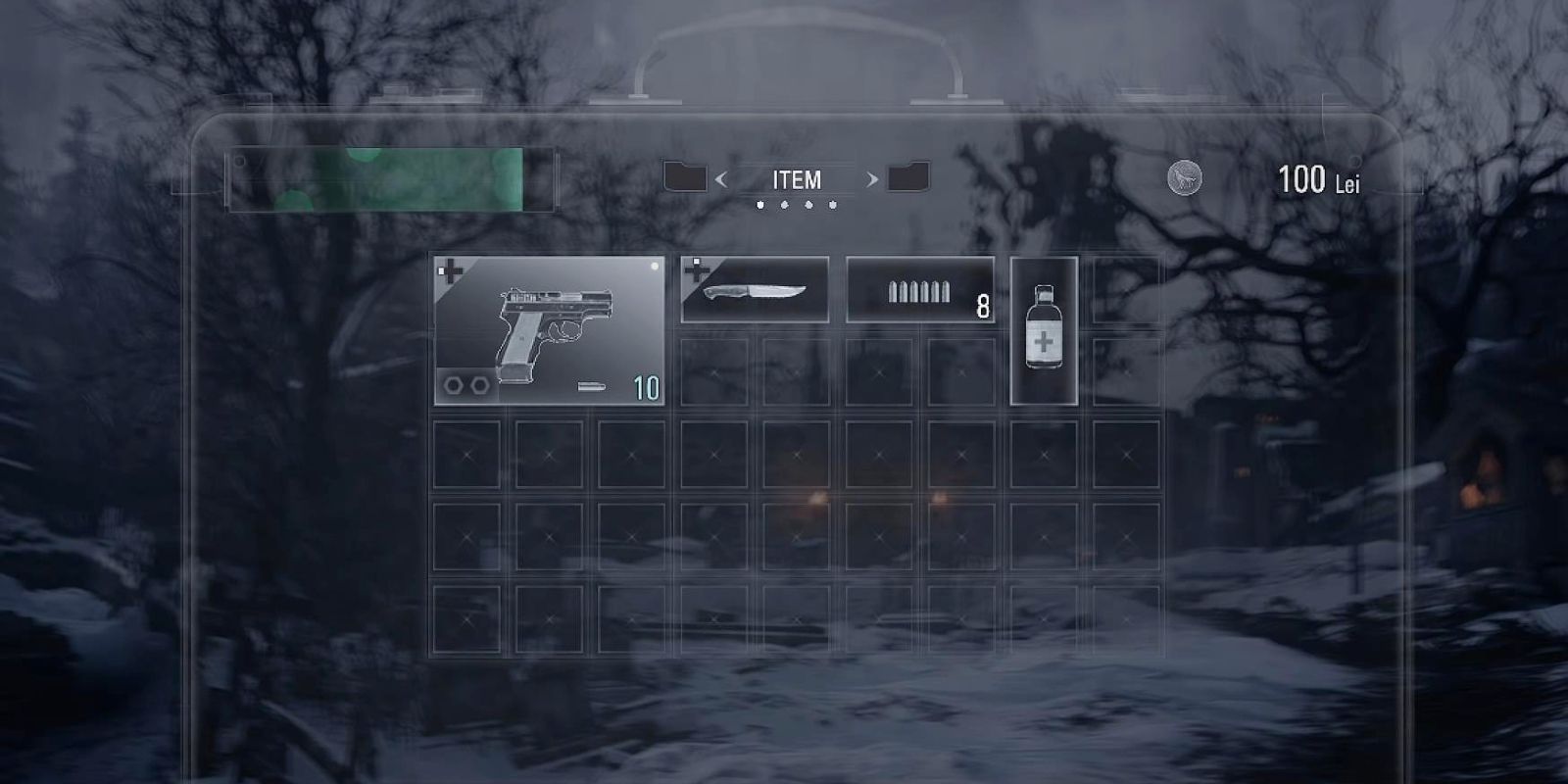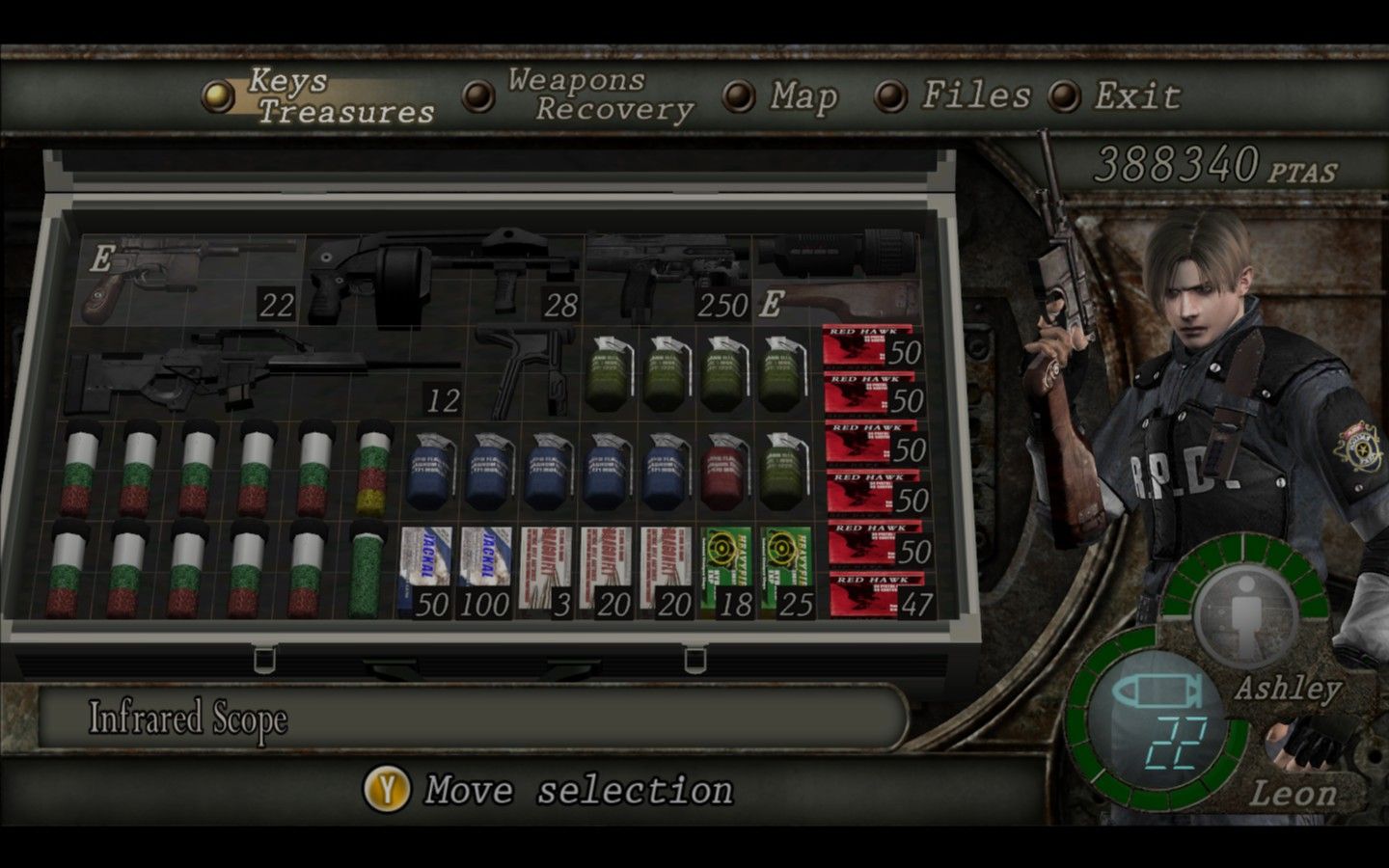The latest entry in the celebrated survival horror franchise, Resident Evil Village, has drawn a lot of comparisons to perhaps the most venerated title in the series, Resident Evil 4. The settings are rather similar, and they both feature an enthusiastic merchant bartering weapons amidst a bioweapon catastrophe. Village built upon its predecessor, Biohazard, in nearly every way, and that includes a larger inventory. The spacious inventory screen is reminiscent of Resident Evil 4's recognizable attaché case.
Though the similarities run right down to the inventory screen, the 16 year old Resident Evil 4 still has a leg up on the brand-new Village in terms of inventory ease of use. When deciding on where to place an item in Resident Evil Village's inventory system, selecting an occupied slot will only swap the held item if the two are of the same size. For instance, while holding one type of ammo, it's possible to place it in a slot already occupied by a second type of ammo, and the game will transfer the second into player control to be placed next. The same is not possible if trying to replace ammo with, say, a shotgun. The shotgun would have to be placed in open slots, the desired slots would have to be emptied, then the shotgun moved again.
This is in no way a detriment to the extremely well-received new Resident Evil game, but simply an annoyance - and an odd one at that, considering RE4 is more lenient on inventory arrangement. RE4 allows players to place an item wherever they see fit, transferring the displaced item into the player's hand regardless of size. Many players won't even notice, since it's fairly inconsequential, but those more invested in an organized inventory screen might find the inability to freely swap items annoying.
The Odd Importance of Resident Evil Inventories
For something that is prevalent in so many games, it's quite strange that the Resident Evil series' inventory screens get discussed and compared so much. They are truly an integral part of the franchise's survival horror experience formula. Players can't carry everything they find, and must balance their inventory with their stashed items, only taking what is absolutely necessary, and sometimes making concessions that could have disastrous results.
The modern Deus Ex games use a similar inventory system, assigning different sizes to various items and requiring puzzle-like organization, but most games take a much less present approach to inventories. A lot of RPGs give the player a maximum carry weight, where a hundred items can be carried simultaneously as long as the character is strong enough. Other games have a maximum number of inventory slots like Resident Evil, but each item has an identical quantity or size, only taking up one slot.
There is something satisfying about a game's inventory having a physical quality to it. While the Resident Evil franchise isn't anywhere close to realistic, only being able to take what the character can carry helps ground the series through a game mechanic that is often nebulous. When a series usually takes such care in crafting these specific menus, its especially noticeable when Resident Evil Village doesn't perfectly emulate the inventory of Resident Evil 4.


